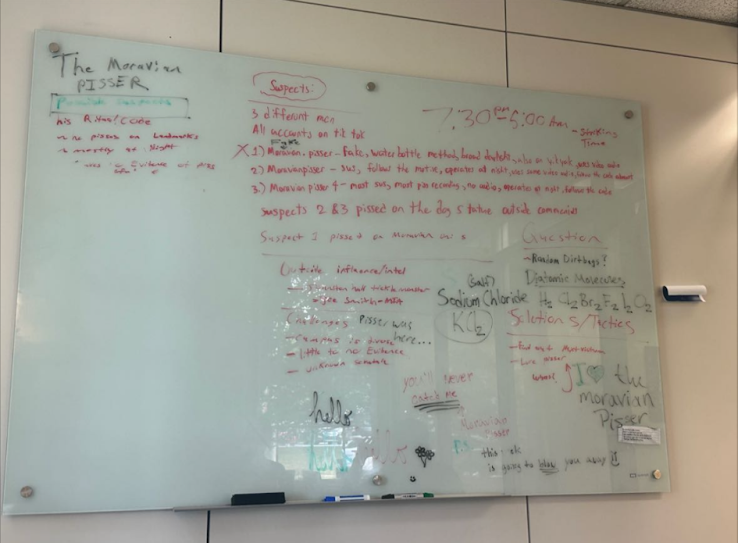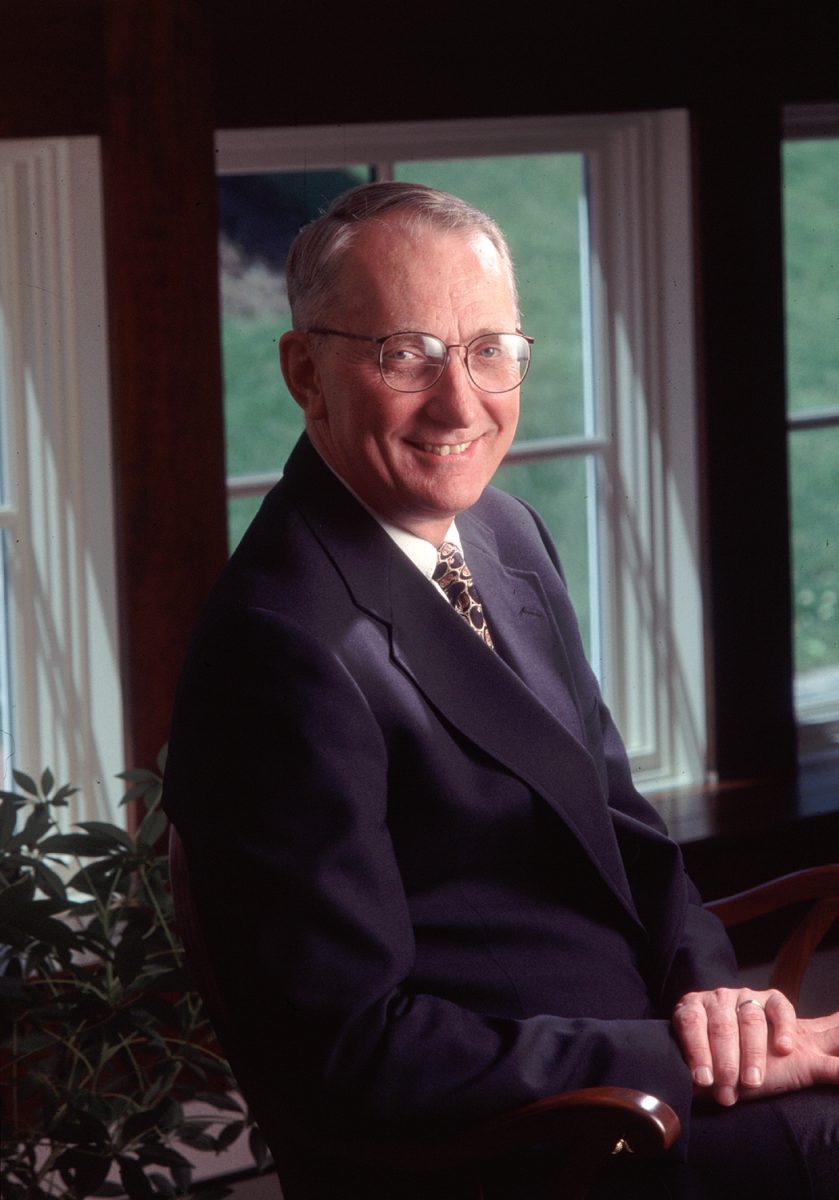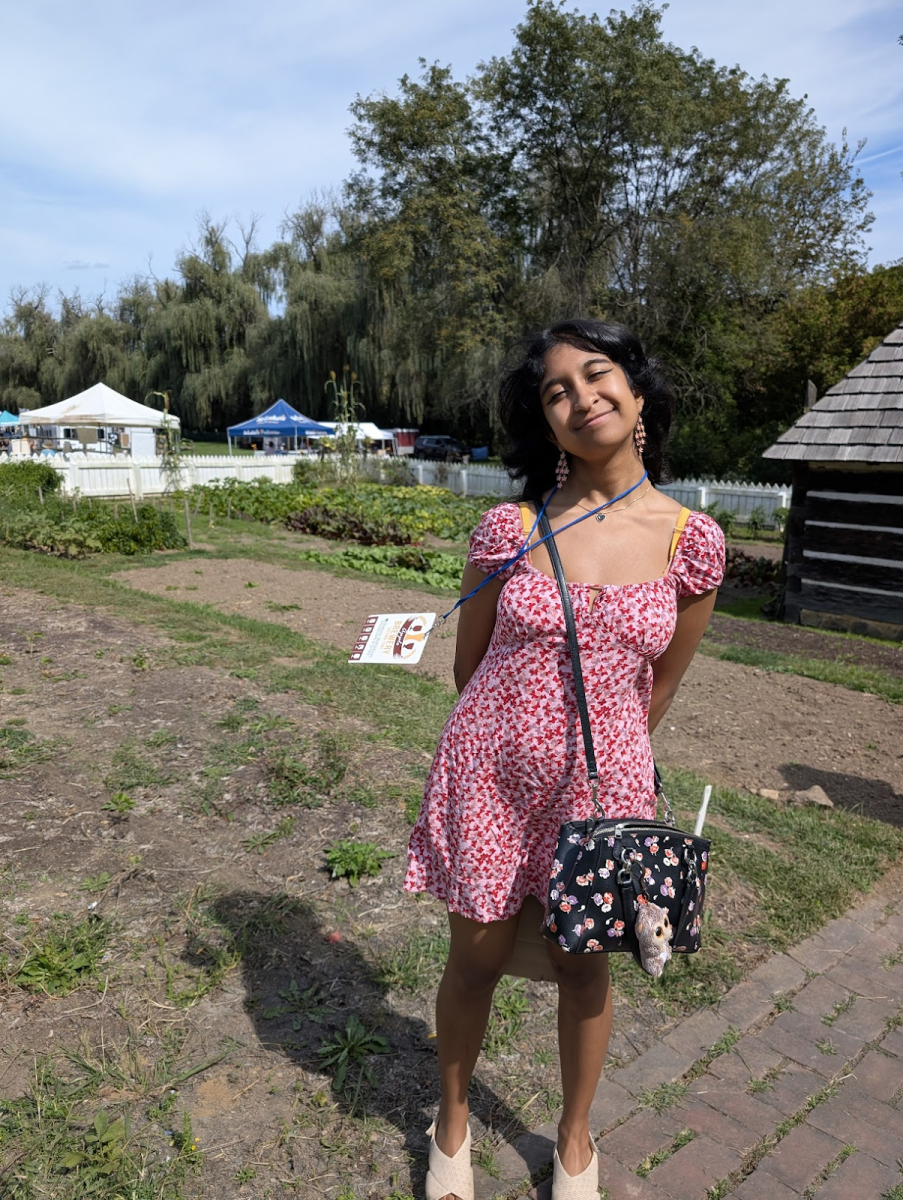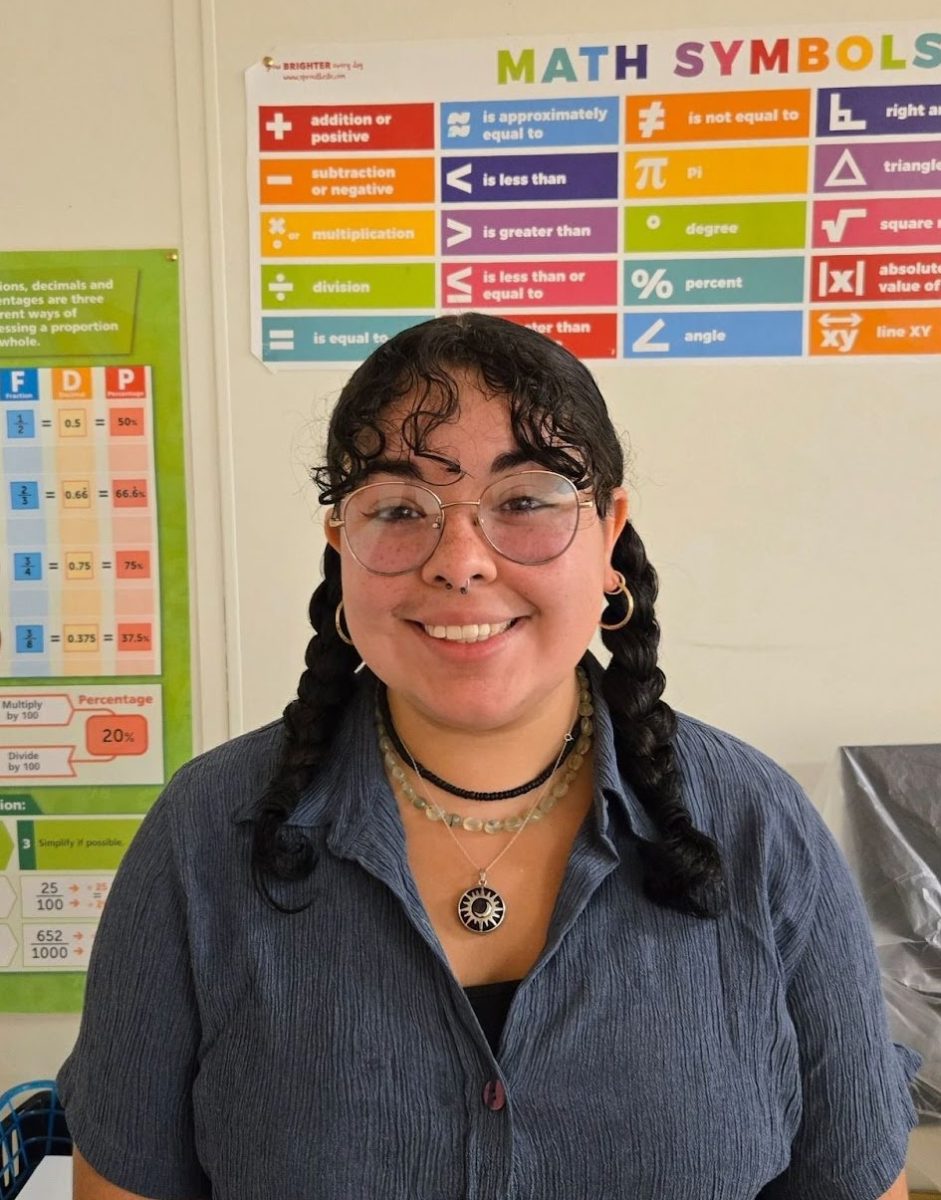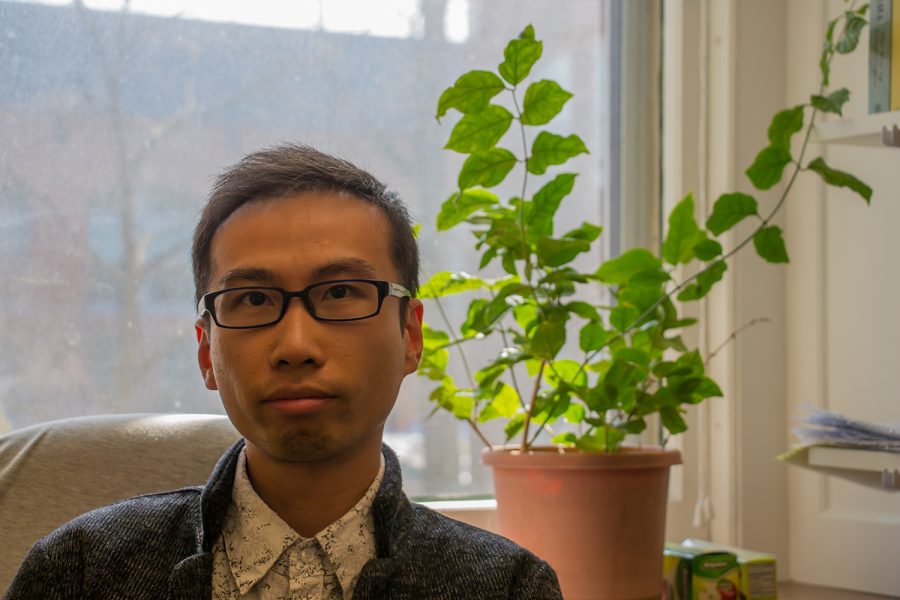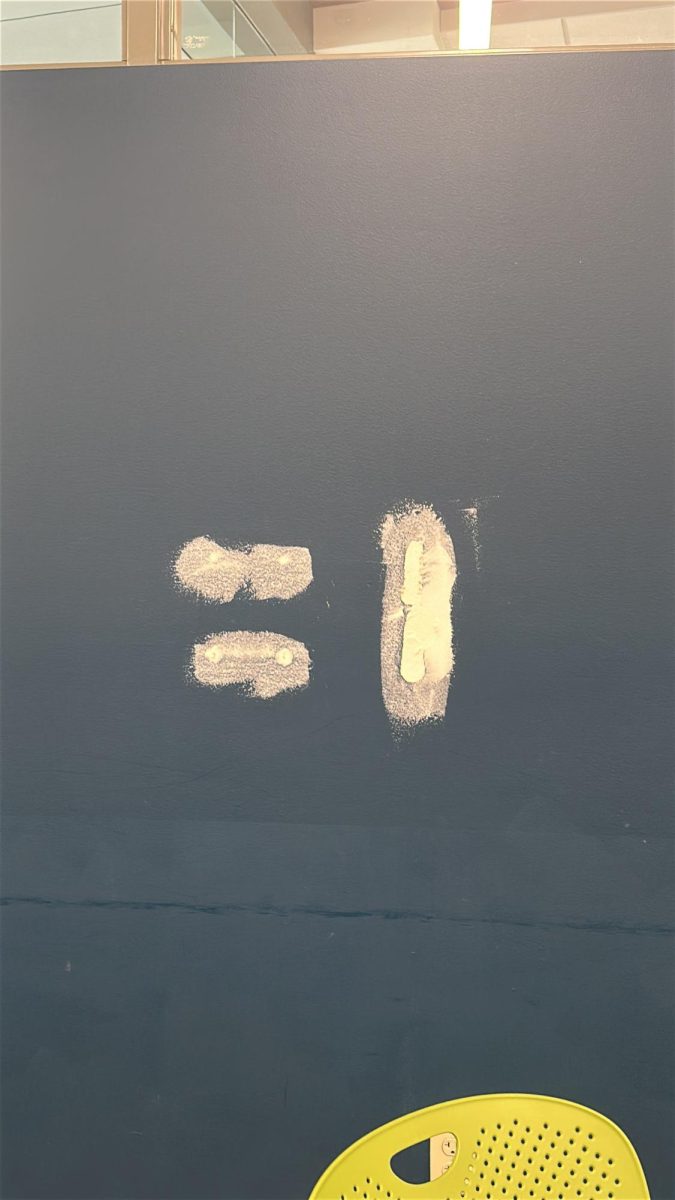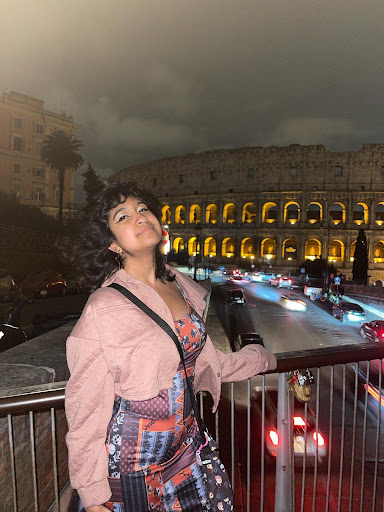
Over spring break, I had the pleasure of going abroad to Rome. Led by Dr. Lalande and Anne Reid, this 10-day trip explored the vast eternal city as well as Florence and Pompeii.
Although I’ve traveled before, I’ve never been to Europe. What was life going to be like a world away from friends and family? How will I adjust to the change? Even with all the research, preparation, and a groovy little playlist, I made ahead of time called La Dolce Vita I did beforehand, I didn’t think I would be able to handle being away. More importantly, I didn’t feel I was adult enough to be in a foreign country away from homely comfort.
Oh, how grateful I was to be wrong! Not only was I enamored with Rome but I somehow swiftly handled its robust cityscape. In the land of pasta, “piacare,” and flirtatious waiters, I found a sense of belonging. Each new day prompted new possibilities, new landmarks to see, and a renewed sense of wanderlust.
There’s seeing the Colosseum and there’s experiencing it before your eyes. A product of the Pax Romana, this enormous stadium – also known as the Flavian amphitheater – was the Roman emblem of its time. In its heyday, it held gladiator fights and even naval battles. Try to think about how they tried to fill the entire stadium with water; it’s insane to think about!
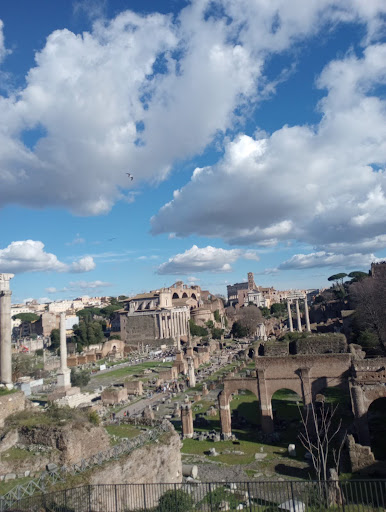
Right outside of this stadium, the Arch of Constantine also has a tasteful history behind it. Erected during Constantine’s reign (306-337 AD), this arch commemorated his triumph during the Battle of the Milvian Bridge against Maxantius. Its intricate design includes carvings depicting Constantine motivating his troops and converting to Christianity.
However, I was even more mesmerized by the Roman Forum, a set of ancient ruins that used to serve as a social and public hotspot during Ancient Rome. Among the ruins, I saw the ancient temples of Vesta and Saturn, the arches of Titus, and Septimus Severus, and the Appian Way. Strolling along the Palantine, I observed its peristyles, or palace courtyards, and its enhancing view overlooking the Circus Maximus. Exploring the ruins, I couldn’t help but imagine how it must have looked like during Rome’s pinnacle golden age.
I’d also like to mention the Baths of Caracalla. These public baths included a frigidarium (cold water), a tepidarium (lukewarm water), and a caldarium (hot water) and were a popular social setting. What was amazing about these baths in how the Romans were able to balance the influx and efflux of water to and from the baths via aqueducts. These baths also had incredible mosaic patterns and stucco paintings. Also, they displayed art and poetry exhibits including poetry by Italo Calvino (and I just so happened to be reading Invisible Cities during my trip)!
It’s also worth mentioning the pizzazzy Piazza Navona featuring Bernini’s Fiumi Fountain. This beautiful square includes some of the snazziest restaurants and niche stores in Rome. The Piazza della Rotonda, while not as impressive, features the gargantuan Pantheon. Commissioned by Marcus Agrippa in 25 BC, this majestic temple features tombs of royal families and statues of God. It also has a dome with an oculus on the very top which was created so that the souls of emperors and kings can travel skyward towards the Gods.
Nearby, I also got to see the tremendous Trevi Fountain and the Spanish Steps located in the Piazza di Spagna. During our visit, located right next to the Steps, I spotted the Keats-Shelley House and I knew I had to go there – it was my civic duty as an English major after all. For just five Euros, you can explore where John Keats lived during the last months of his life and even read letters and poems he produced during this time. It also featured the works of other Romantic poets such as Percy Bysshe Shelley and William Wordsworth. You even got to go to the very room where Keats passed away.
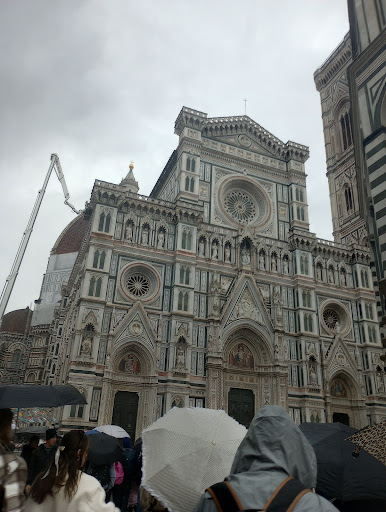
The ever-flowing Florence was an artful taste of the Renaissance. Santa Maria del Fiore is one of the largest cathedrals in the world and includes one of the most beautiful ceiling paintings I’ve ever seen (and controversially, I think it’s cooler than the Sistine Chapel). Also, I got a very amazing opportunity to see the Accademia Gallery and got to see Michaelango’s David, an incredibly divine creation. Florence also has vibrant marketplaces with everything from jewelry to leather goods and no shortage of high-end shops that are way out of my tax bracket.
In Pompeii, I got to see the majesty of Mt. Vesuvius from afar and explore the ruins of Pompeii, once a hive of entertainment and extravagance. I had the pleasure of visiting an ancient brothel featuring erotic paintings and an absurdly hilarious amount of phallic carvings. The ruins also featured the garden of fugitives, containing the 13 plaster-cast bodies caught in the eruption. Strangely enough, there were lots (or dare I say, a colosseum worth) of cats in these ruins and I even got to pet one. Also, before anyone asks, yes, I did play Bastille’s Pompeii during my visit; truly a triumphant moment!

On our last day, I visited the Vatican and had the pleasure of walking through St. Peter’s Basilica. Our tour guide for the day, Silvia, was really delightful and explained every sector leading up to the Sistine Chapel. The chapel itself was a magnificent display of Michaelango’s vision and I loved looking at every detail of the ceiling and the walls.
I can not stress enough how much I loved the meals I had there. I already adored Italian cuisine before my trip, but I had barely scratched the surface of delicacies this country had to offer. Lasagna? Classic! Petto di pollo? Exquisite! Strachetti di pollo? Obsessed! Seafood spaghetti? To die for (and also made me stop hating clams)! Margarita pizza? Way better than how Americans cook it! These restaurants were very classy and had such an amazing array of foods to choose from.
Also, the waiters were so friendly (some a little too friendly) and attentive. Shout-out to Jasmine from Falo Bistrot, you made my dining experience so amazing and were a joy to interact with!
Rome’s vibrancy and liveliness enlightened me and made me learn a lot about myself. It reignited not only my love of travel but also my love of Ancient Roman history. It also made me realize that I can swiftly adjust to foreign places. Although I didn’t get to meet Måneskin or high-five Pope Francis, I am eternally grateful for having visited such a sublime city.
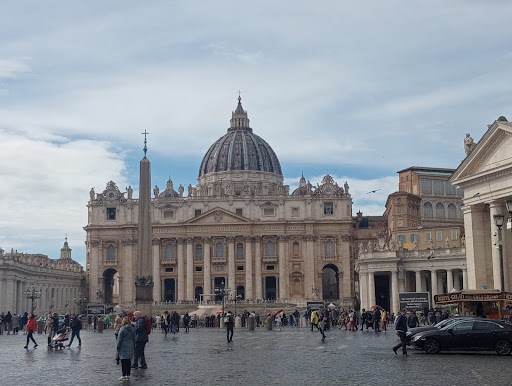
I have been home for barely a week and I already yearn to go back to Rome and relive all its historical grandeur again. If I could, I would love to go again and enrich myself in the culture even more! I might even consider studying abroad there for a semester.
Special thanks to my trip leaders, Dr. Lalande and Anne Reid, for making this trip so engaging! You both were so delightful and amazing to be around!
If you’re ELEVATE eligible or just have the means to, please, please, please go and travel! It’s an opportunity worth looking into and by the end of it, you’ll want to relive it all again. And, maybe, just maybe, you can find your own home away from home!



